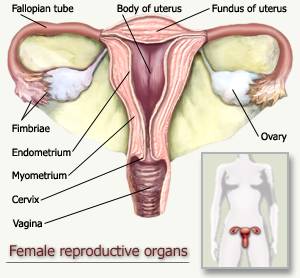"One of life's great dramas: the development
of an offspring in the image of its parents"
- Cecie Starr

Every adult knows that "babies are made" when a sperm
cell from the father and an egg cell from the mother unite. When
trying to get pregnant, it helps a lot, though, when you understand
a few basics of the process of conception, as well as a few "misconceptions"
(pardon the pun) surrounding the process. For those having difficulty
conceiving, there may be a myriad of factors to look into, and finding
the root cause starts with dissecting the basics in detail.
The basics of conception
This exciting chapter in a woman's life is composed of a series
of events:
Each month, the pituitary gland in the brain releases hormones
that stimulate your ovaries to release an egg via the process called
ovulation. This usually happens around Day 15 of a regular 28-day
cycle, but varies from person to person and even month to month.
Once the ovum is released, it travels to the fallopian tube. This
is the perfect time to conceive if you're planning a pregnancy.
As it is released, it has about 24 hours to unite with a sperm.
Fertilization occurs usually through the act of sexual intercourse,
in which a man ejaculates inside a woman, thus releasing his sperm;
however, the advent of artificial insemination has made it possible
for women to become pregnant if prexisting medical conditions from
either the woman or the man make fertilization through sexual intercourse
difficult, or if a woman chooses to become pregnant without a male
partner, for any number of reasons.
Though pregnancy begins at implantation, it is often convenient
to date from the first day of a woman's Last Menstrual Period (LMP).
This is used to calculate the Expected Date of Delivery (EDD).
Want to learn more?
"So You Have Actively Trying To Get Pregnant" will show you exactly how to get pregnant now!